Automated Fabrication
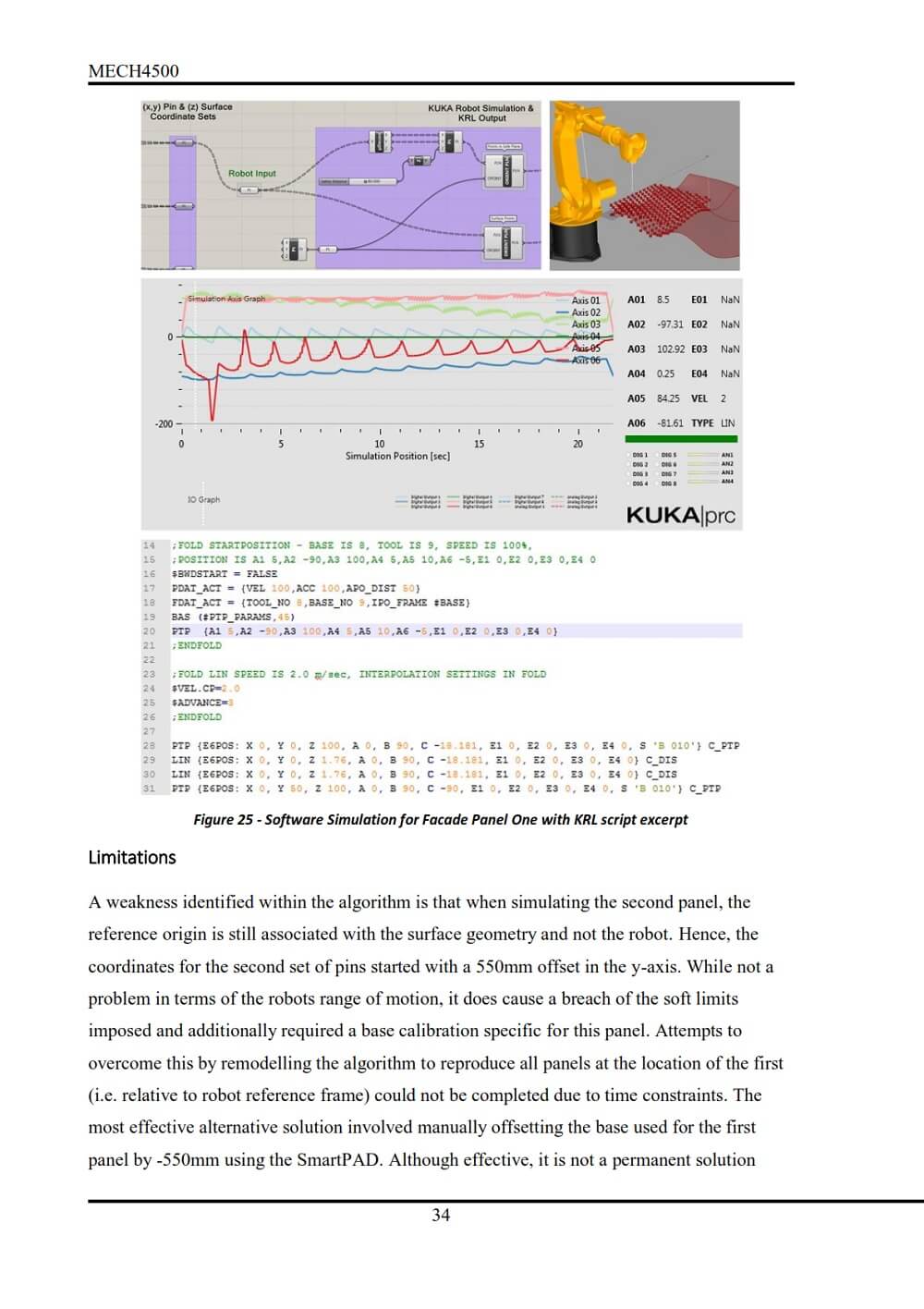
The buildings we inhabit consume a considerable amount of the energy each year however there is currently a global movement towards minimising the impact human society has on the environment. This is driving the demand for more complex, and even intelligent façade systems to reduce the requirements of air conditioning and lighting while maintaining comfort. Through the development of 3D modelling and analysis software, architects and engineers have the ability to digitally produce innovative solutions. However, when complex, double curvedgeometries are proposed, the costs and difficulty associated with conventional fabricationtechniques often make the transition to reality impractical.
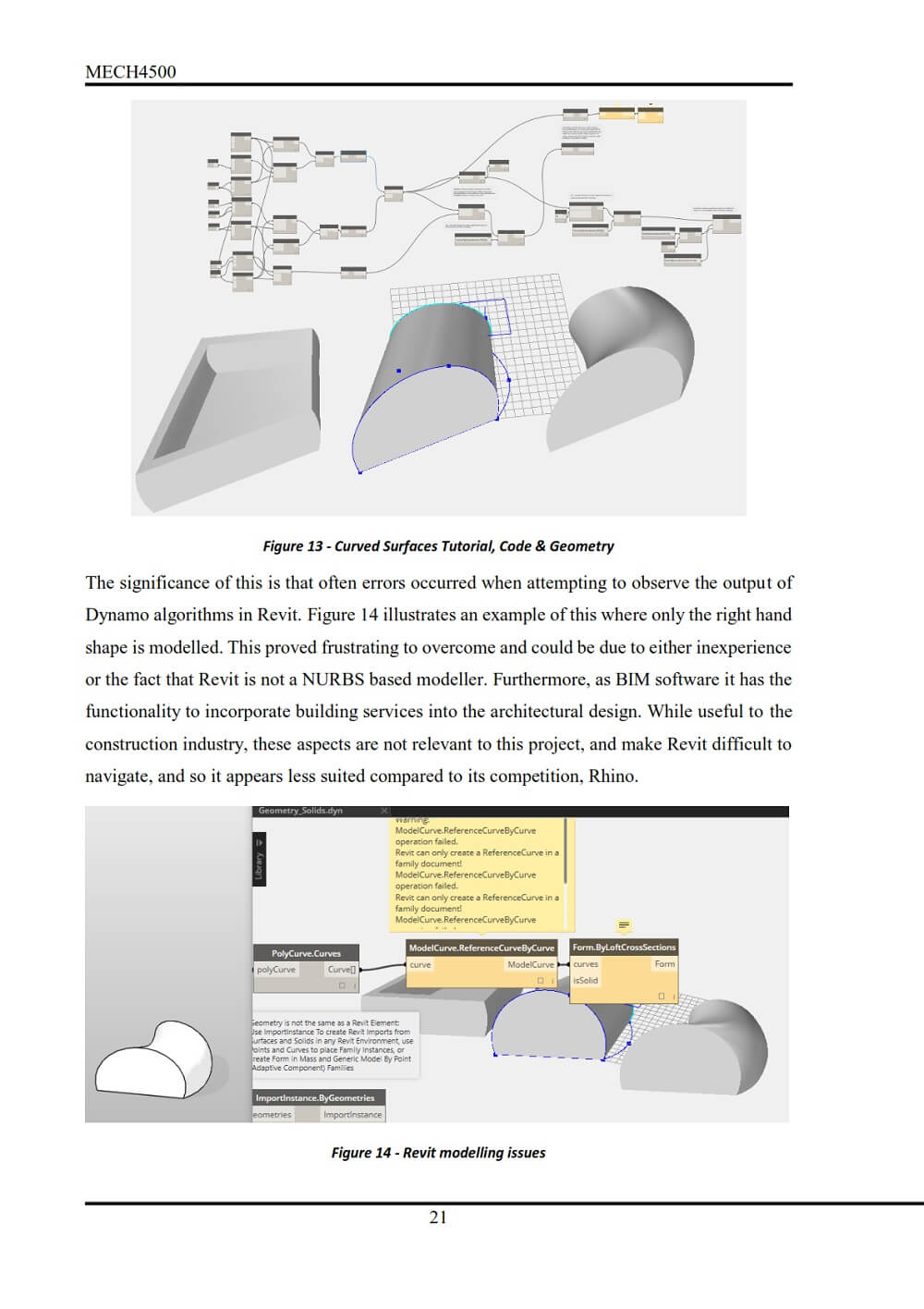
Within this thesis by Judah Hook is the investigation and development of an alternative fabrication concept that utilises an inexpensive, reusable “pin board” mould that is autonomously set to various CAD derived surface geometries by a 6-axis robotic arm manipulator. A digital algorithm models a double curved test façade, subdivides it into manageable panels based on the dimensional parameters of the mould, creates a robotic toolpath simulation to map the surface geometry and generates the required machine-driving code.
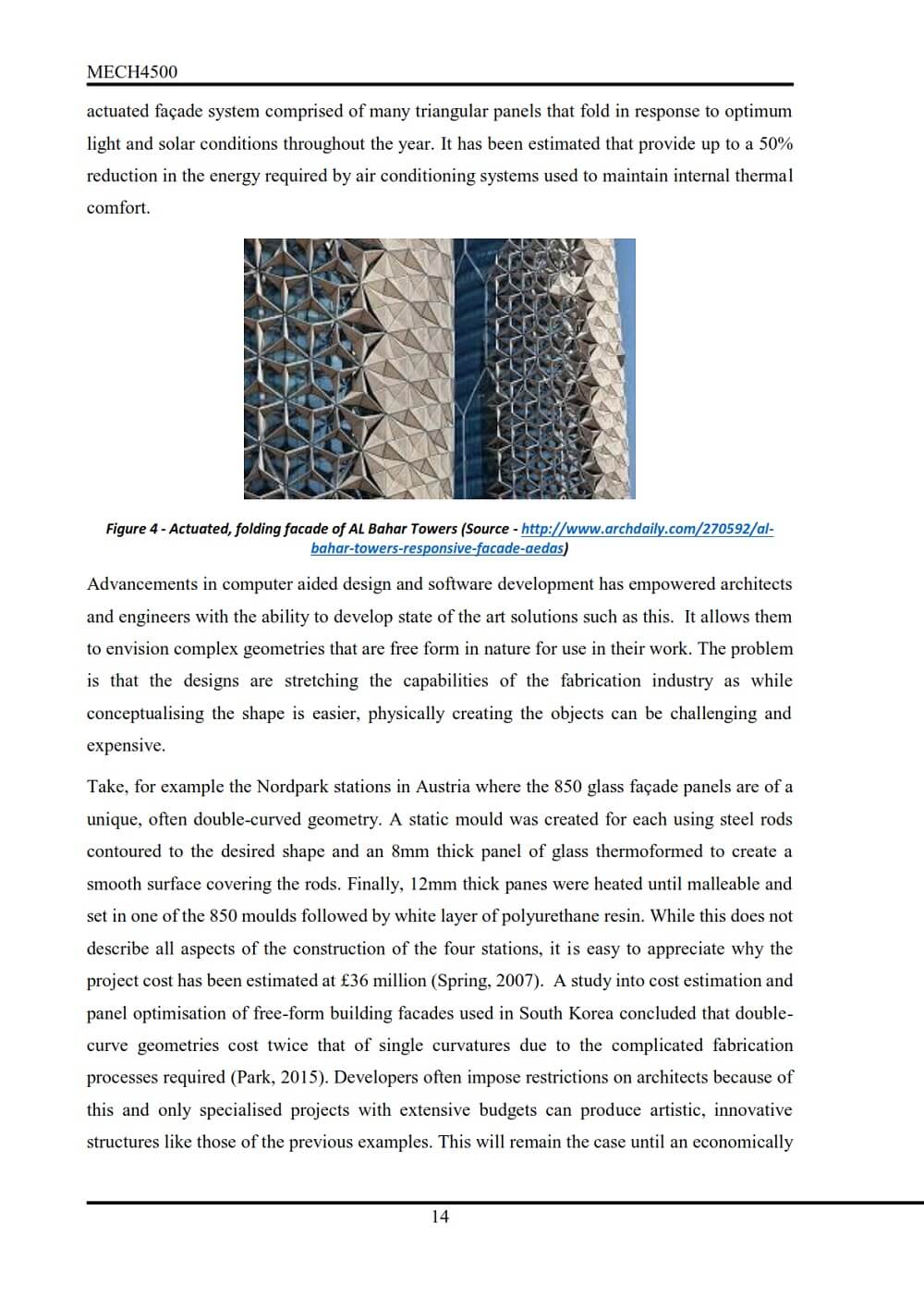
Active trails successfully set the pins of the mould to within 0.6mm of the analytically predicted coordinate. At fully operational speeds, this process is estimated to take less than 2 minutes. To establish a proof of concept, automated setting of the mould was conducted for two neighbouring panels of the façade with unique but respective geometries. Under its design intent conditions, the set mould was used to fabricate samples of the digitally designed panels out of composite materials to assess the concepts strengths and weaknesses. This resulted in geometries that adequately resembled the curvature of the CAD model, however preliminary samples exhibited considerable surface and structural defects.
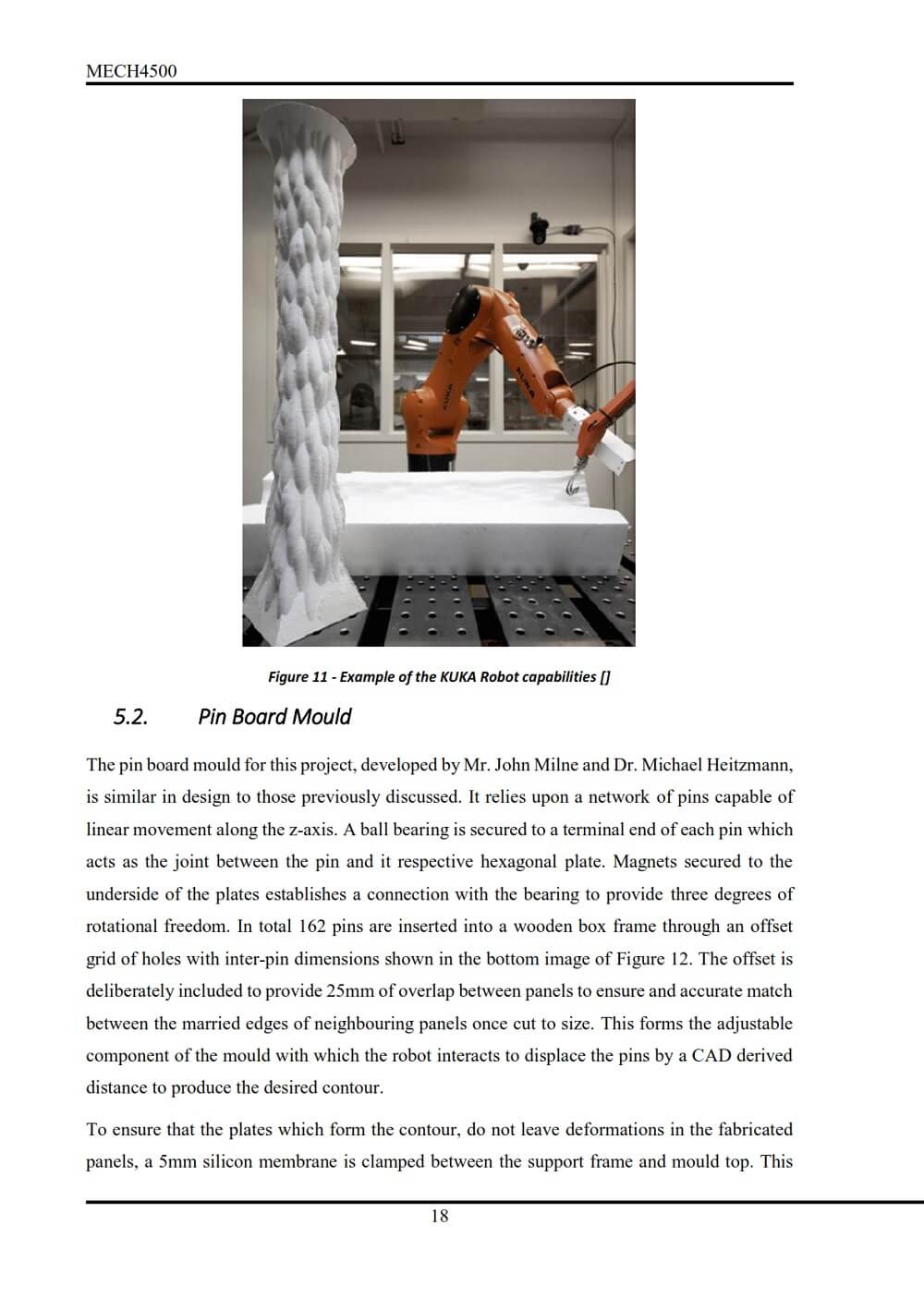
Alteration of composite material selection and minor mould modifications refined subsequent panels sufficiently to allow for their assembly. While imperfections still exist, the continuation of curvature from one panel to its neighbour exhibits good correlation and the assembled façade section can easily be identified from the digital surface. At all stages of experimentally testing the concept, limitations were identified and addressed as far as practically possible. For those remaining, solutions are detailed such as design modifications and algorithm improvements that if implemented in future works will aid the development of the automated fabrication concept, potentially towards a full-scale composite façade fabrication method that permits complex geometries while remaining cost effective.
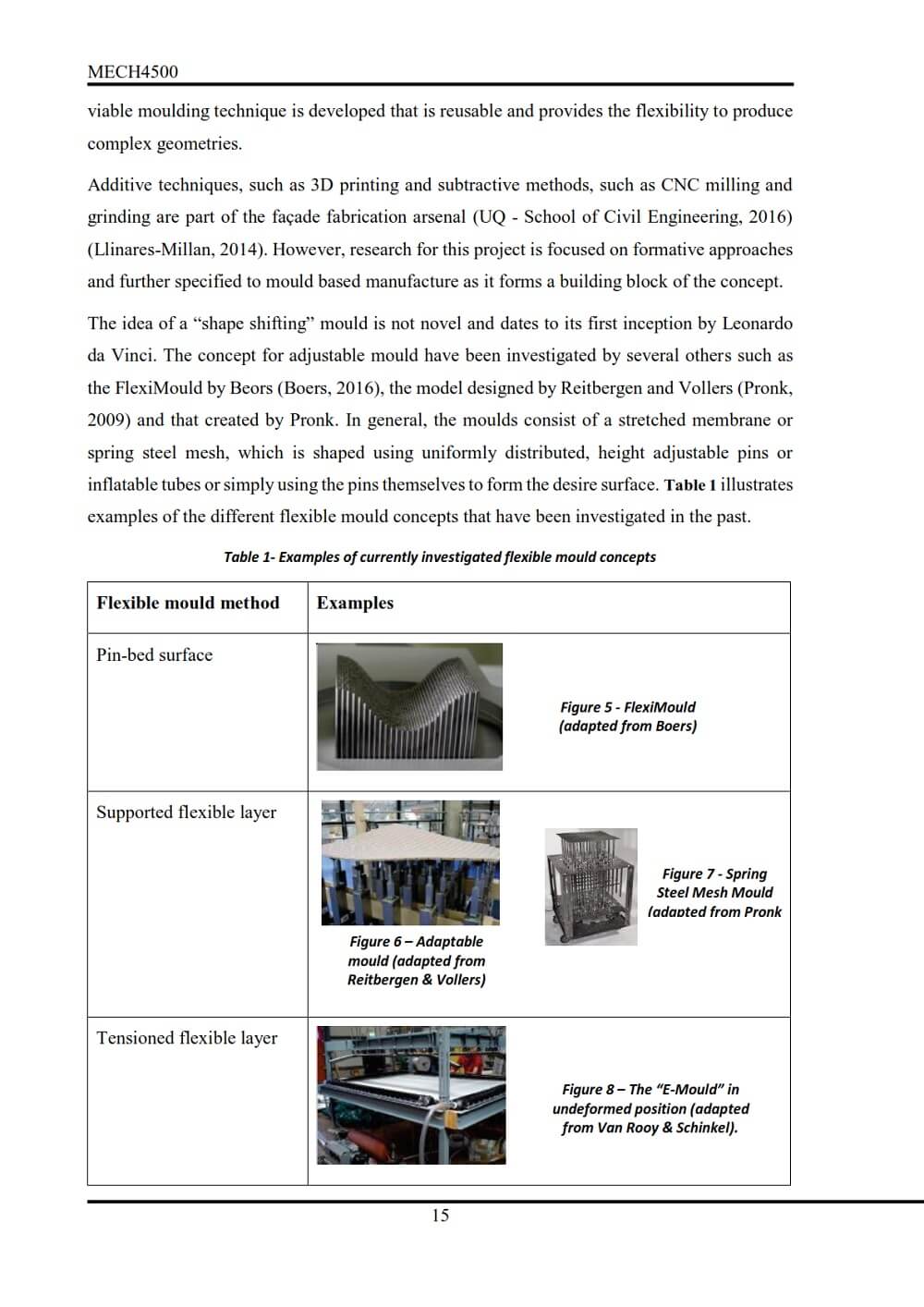
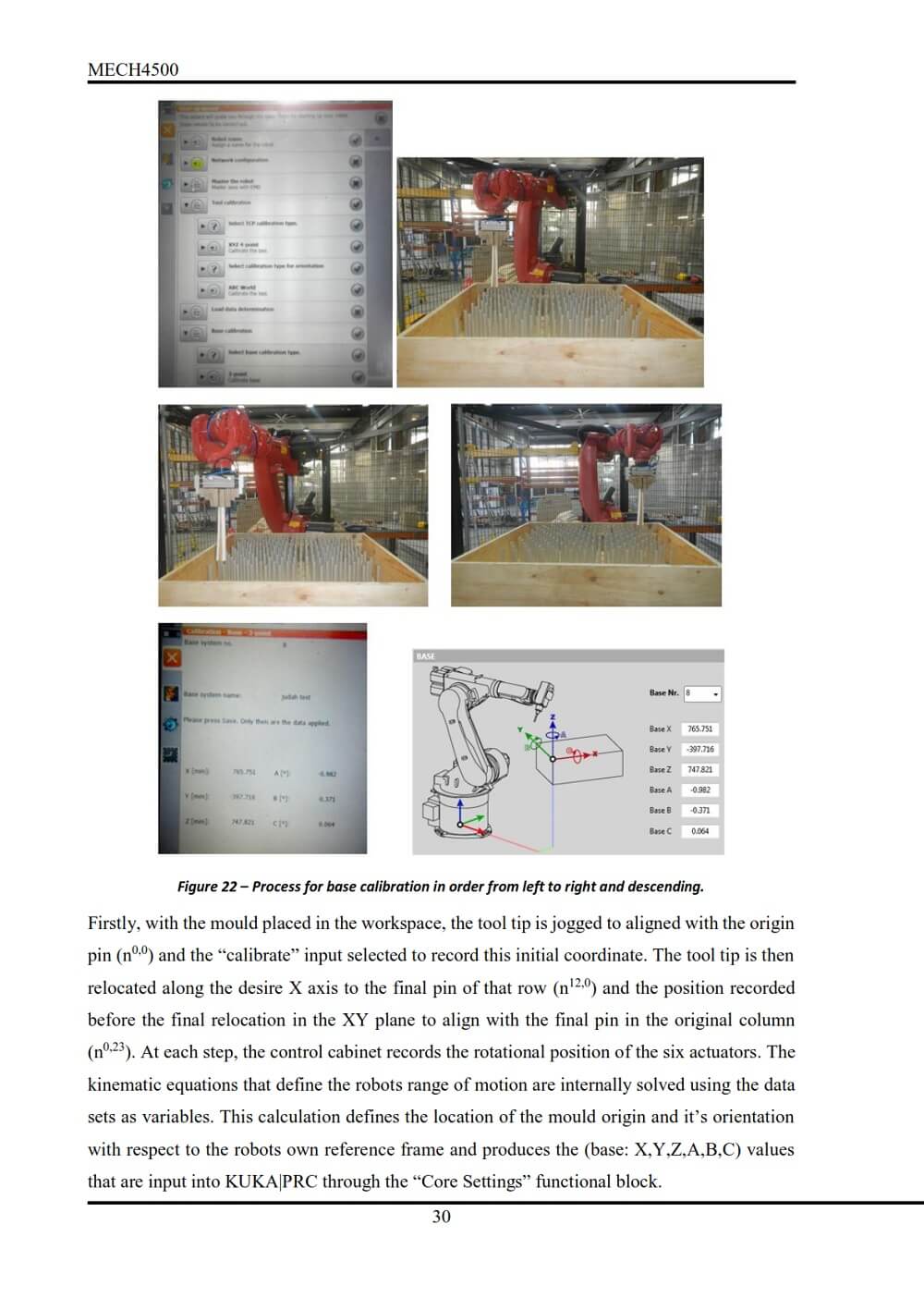
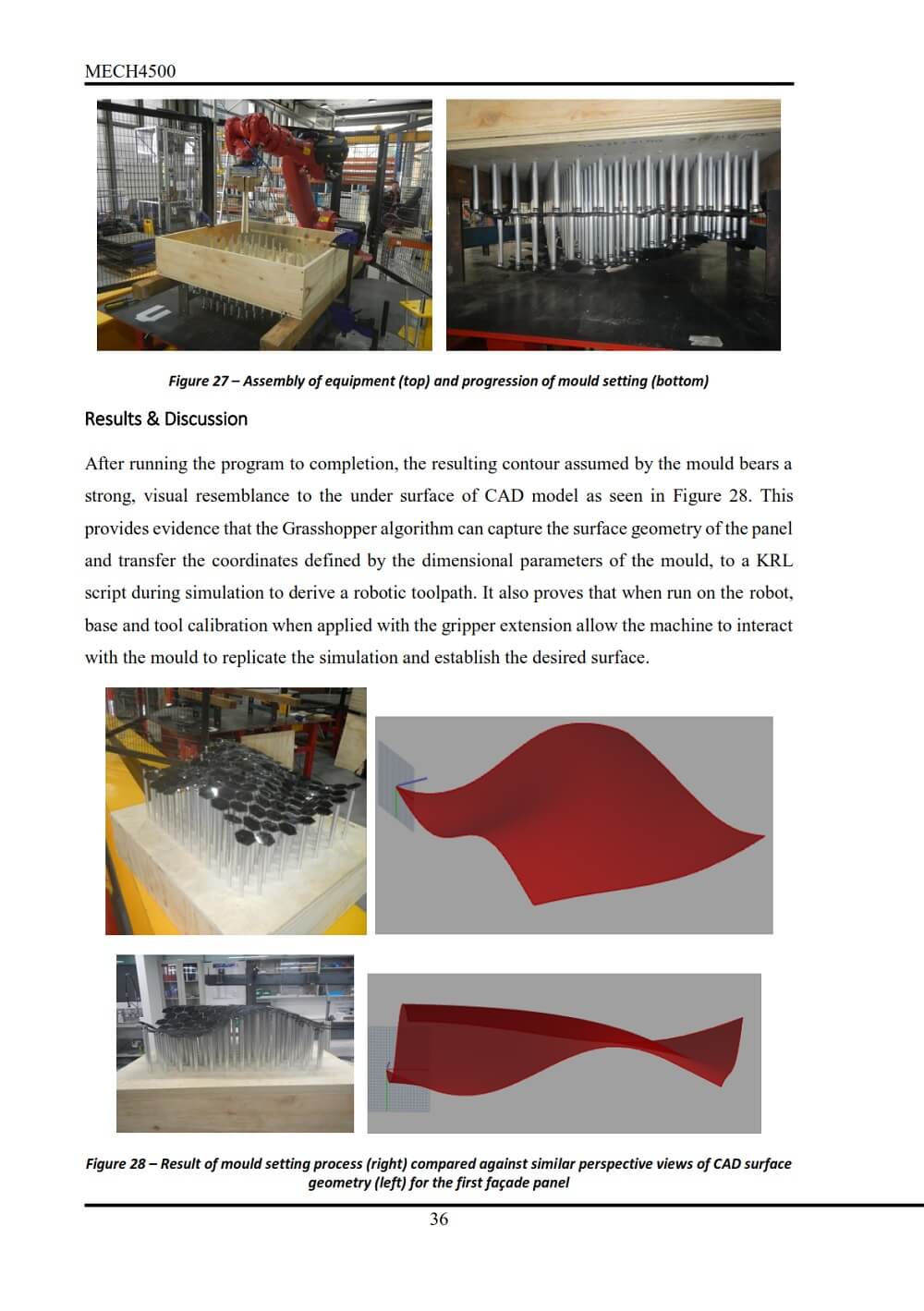
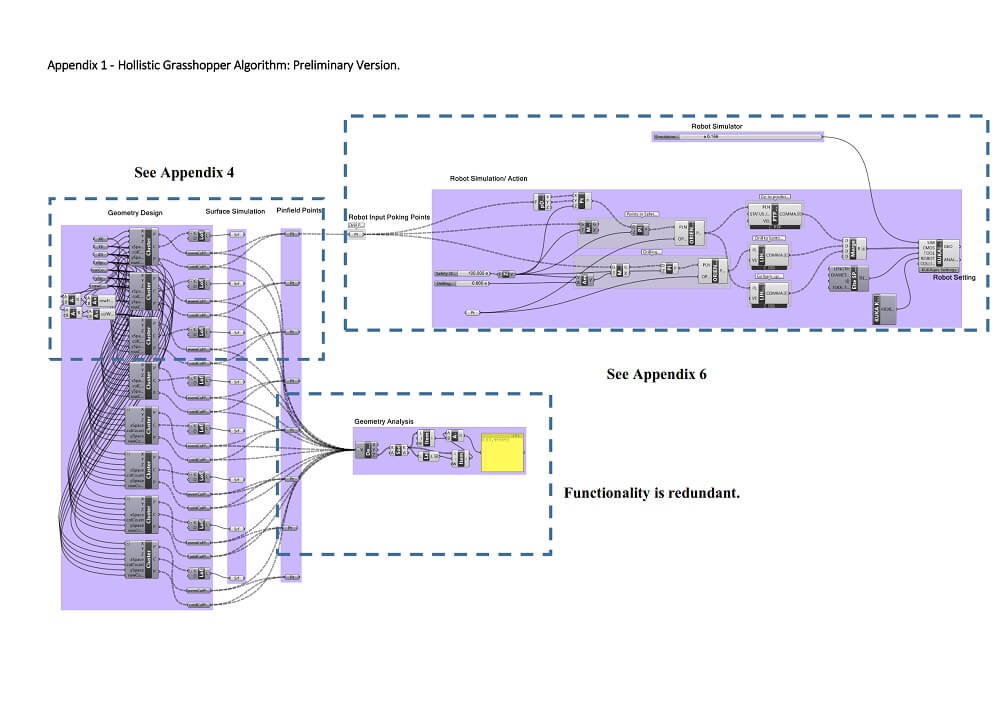
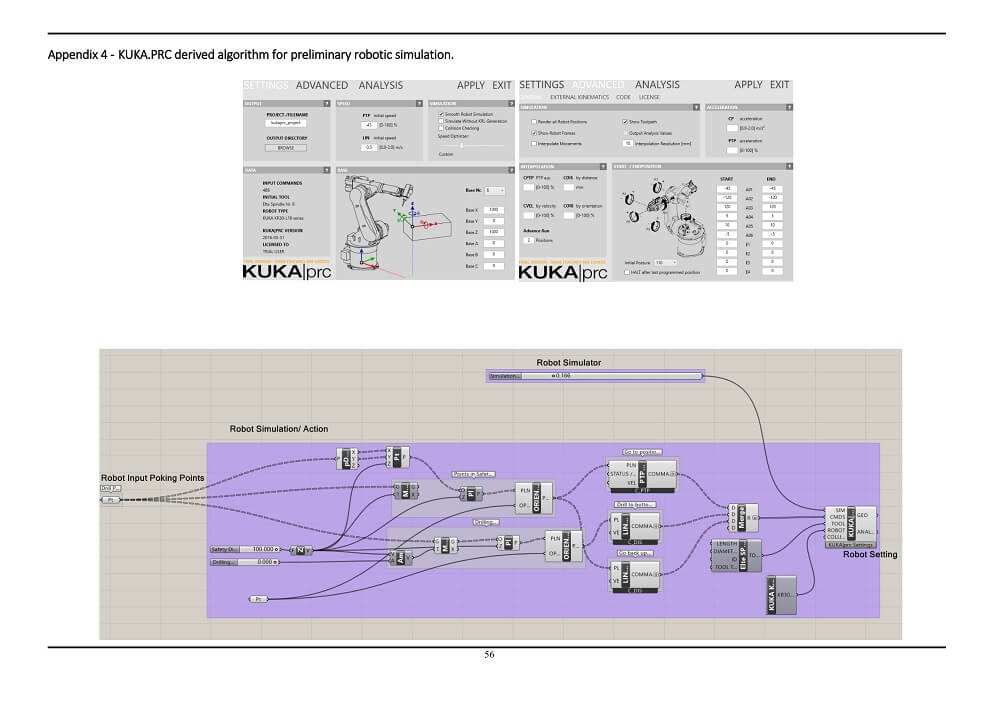




























Comments